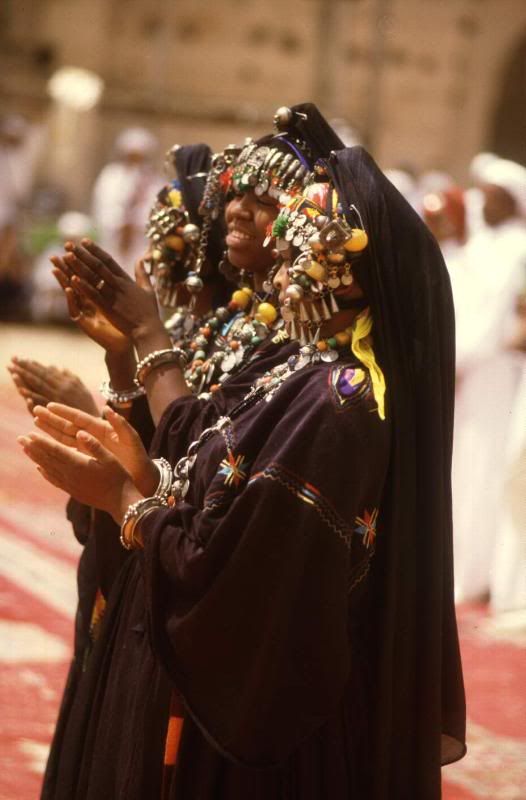

Shem Hotep ("I go in peace").
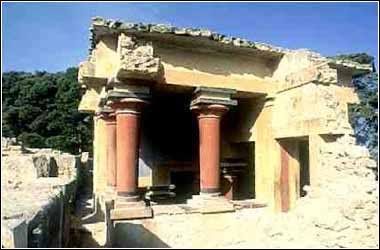
north entrance of Palace of Knossos
MINOAN CRETE AFRICAN INFLUENCED FORERUNNER OF EUROPEAN CIVILIZATIONS
"The first civilization of Europe was established on the island of Crete. It is called the Minoan Culture, after King Minos, an early legendary ruler of the island. The ancestors of the Cretans were natives of Africa, a branch of Western Ethiopians." --John G. Jackson
Minoan Crete, the forerunner of Greek civilization, is the earliest known European high-culture. Although modest in size (170 miles east to west, thirty-five miles north to sourth), Crete exercised immeasurable influence on the Aegean archipelago, Western Asia and the Greek mainland. Throughout Crete the vestiges of complex palaces, paved highways, aqueducts, terra-pipes for drainage, and irrigation canals provide plentiful proof of Minoan ingenuity in the areas of scientific and technical innovation. The Minoans possessed registed trademarks, uniform weights and measures, calendrical systems based on precise astronomical observations and advanced writing systems. Interestingly enough, there were few fortifications on the island.
British archaeologist Arthur Evans (1851-1941), who conducted excavations on the island, was convinced of African migrations to ancient Crete and noted "the multiplicity of these connections with the old indigenous race of the opposite African coast." The late African-American cultural historian John G. Jackson (1907-1993) advocated the view the Minoan civilization was rooted in Africa, and believed that the ancestors of the Minoans "dwelt in the grasslands of North Africa before that area dried up and became a great desert. As the Saharan sands encroached on their homeland, they took to the sea, and in Crete and neighboring islands set up a maritime culture."
The research team of C.H. and H.B. Hawes, the latter of whom, like Evans, conducted important archaeological excavations in Crete, support John Jackson's argument, and noted that: "Anthropologists are inclined to the view that the Neolithic people of Crete were immigrants, and probably came from North Africa."
Arthur Evans was convinced of North African migrations to Neolithic Crete. He pointed out that:
"The multiplicity of these connections with the old indigenous race of the opposite African coast, and which we undoubtedly have to deal with in the pre dynastic population of the Nile Valley, can in fact be hardly explained on any other hypothesis than that of an actual settlement in Southern Crete."
Historian H.R. Hall, also Oxford trained, shared Evans' position on the early population of Minoan Crete:
"While the majority of the original Neolithic inhabitants of Crete probably came from Anatolia, another element may well have come in oared boats from the opposite African coast, bringing with them to the southern plan of Messara the seeds of civilization that, transplanted to the different conditions of Crete, developed into the great Minoan culture, a younger more brilliant, and less long-lived sister of that of Egypt."
Whether the Minoan culture was more brilliant than that of Egypt is highly questionable at best, but on the other points Hall seems to just about to hit the mark. Evans, again, indeed considered Egypt and Libya as the springboards of Minoan civilization; so much so that he structured his own Minoan chronology on that of dynastic Egypt. He was particularly struck by the similarities in the contents of the of the tombs of the ancient Minoans and Egyptians:
"So numerous, in fact, are the points, of comparison presented by the contents of these early interments with those of pre dynastic Egypt that, far-fetched as the conclusion might appear at first sight, I was already some years since constrained to put forth the suggestion that about the time of the conquest of the lower Nile Valley by the first historic dynasty some part of the older population had actually settled in this southern foreland of Crete."
Gordon Childe also commented on the relations between Crete and pre dynastic Egypt:
"At least on the Mesara, the great plain of southern Crete facing Africa, Minoan Crete's indebtedness to the Nile is disclosed in the most intimate aspects of its culture. Not only do the forms of early Minoan stone vases, the precision of the lapidaries' technique and the aesthetic selection of variegated stones as his materials carry on the the pre dynastic tradition, Nilotic religious customs such as the use of the sistrum, the wearing of amulets in the forms of legs, mummies and monkeys, and statuettes plainly derived from Gerzean `block figures,' and personal habits revealed by depilatory tweezers of the Egyptian shape and stone unguent palettes from the early tombs and, later, details of costumes such as the penis-sheath and loin-cloth betoken something deeper than the external relations of commerce."
Cretan/Egyptian contacts pick up again in the sixteenth and fifteenth centuries B.C. During the reigns of Egyptian monarchs Makare Hatshepsut and Thutmose III (1504-1447 B.C.) the people of Crete, whom the Egyptians called Keftiu, were graphically portrayed as tribute bearers on the walls of the tombs of the Egyptian nobility.
SOURCES:
African Presence In Early Europe, Edited by Ivan Van Sertima


Ivan Gladstone Van Sertima (26 January 1935 - 25 May 2009)
Man, God And Civilization, by John G. Jackson
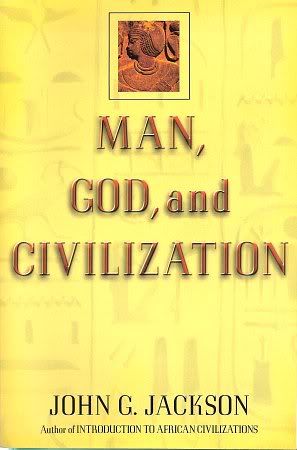

John Glover Jackson (April 1, 1907 – October 13, 1993)
Crete and Phoenicia
The ancient Crete civilization has been referred to as the Minoan culture, named after King Minos. The ancestors of the Cretans were natives of Africa, a colony of western Ethiopians, who dwelt in the grasslands of North Africa before that area became a desert. As the Sahara expanded, these Africans took to the sea, and in Crete and the neighboring islands, set up maritime culture.
By 1700 B.C., this civilization had reached its peak. The Sea Kings of Crete at Knossus ruled over the region that became the cultural center of the eastern Mediterranean.
The Palace of Minos contained a throne room, a chapel, storerooms, and bathrooms with terra cotta bathtubs, fitted with drains quite modern in construction. They were made of faucet-joined pipes superior to any known to the later Romans and unequaled until the nineteenth century.
The Minoan palace royalty was but a replica of Egyptian royalty, and the very name of Minos seem to be only a slight alteration of the name of the first Egyptian Pharaoh, Aha Mena or Menes.
In 1420 B.C., the eruption of the volcano on the Santorini Island had a catastrophic effect on the people of Crete. All the Islands in the sea of Aegea and Crete were covered with a layer of volcanic dust ten centimeters thick. A cloud covered the area for several days and the tidal wave (tsunami) destroyed the entire coastline. The cities of Cnossus, Mallia, Hagia, Amonisos, Gournia, and Triada were destroyed. The gas fumes poisoned the population, causing illnesses such as bronchitis and digestive disorders.
After the explosion on the Santorini Island, most of the surviving population is thought to have moved from Crete to continental Greece and Asia Minor.
Phoenicia and Greece proper are believed to have benefited from the invasion of the Cretans after the Santorini eruption and the culture and civilization that came with the new inhabitants.
The Phoenicians were known as the first great mariners and merchants of the ancient world, who adapted many of the cultural elements of the Egyptians. We first hear of these people as dwellers on the shores of the Persian Gulf. And later, they colonized the land of Canaan. Hence, calling themselves Canaanites. These mariners manufactured a famous dye called Royal Purple, which the Greeks later referred to as Phoenix, from the term Phoenicians.
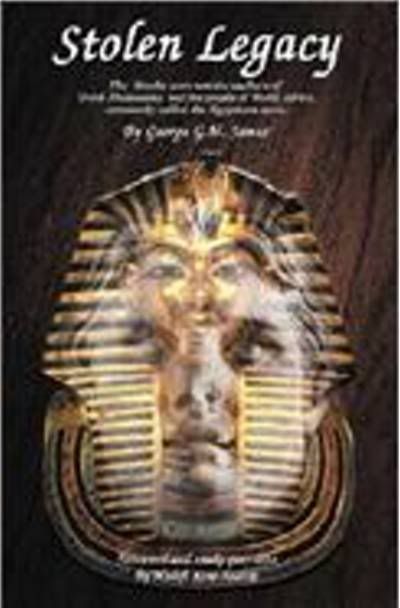
Greece and Rome
The Greeks are known for their contributions to science, mathematics, and philosophy. Yet they knew nothing about any of this before studying these concepts from the Egyptians. Aristotle acknowledged that his own teachings came from Egypt. All the known theories of Pythagoras, Plato, and Democritus came from the education they received in the Egyptian temples.
Egypt, from very early times had been the University of Greece. It had been visited, according to tradition, by Orpheus and Homer. Most of the so-called Greek intellectuals reportedly made the voyage to Egypt. It was regarded as a pilgrimage to the cradle land of their mythology.
Why then, did the Greeks, and later the Romans, find if necessary to claim that so-called "Greek Philosophy" had something other than an African origin—an origin that goes back thousands and thousands of years? Perhaps the Greeks knew that for a nation to establish itself as a world power, it could not accept and maintain in its original form, the teachings of a people just conquered. Throughout history, a conquering nation has always taken the treasures of those conquered and incorporated the best of their ideologies, i.e., math, science, religion, architecture, etc., into their own society.
Consider if you will Alexander the so-called Great, and his partners in crime, who looted and burned the libraries containing all of the books from the ancient Mystery System. The Mystery System of Egypt, in connection with the God Osiris, was represented in all Egyptian temples by the symbol of an "Open Eye." This symbol also forms part of the decoration of all Masonic lodges of the modern world and dates back to 5000 B.C., or earlier. This same symbol was represented by the Egyptians as a god with eyes all over his, known as the "All Seeing Eye."
The Greeks' necessity to change from an African to Greek philosophy becomes quite clear. As the Greek kings began to dominate the Egyptian Empire, the knowledge and institutions of the ancient Mysteries had to be corrupted in order for the Greeks to gain control of the Egyptian people.
The name of the continent was changed from Alkebu-lan to Africa, and the names of the countries also changed, mainly because the Greeks could not pronounce some of the names, i.e., Ta-Merry or KEMET (Kimit, Kmt), became Egypt. The titles of special events and places were also changed, for once the memory is erased, domination and control can begin.
Herodotus, the "Father of European History," received his basic and advanced education from the indigenous Egyptians, who were Africans, studying the seven liberal arts and sciences in the Mystery System in Egypt. Herodotus had to translate his new knowledge to the understanding of his fellow Greek citizens in terminology and sounds that they could comprehend. Also, the Greek alphabet did not contain a sufficient numbers of characters to produce certain indigenous African sounds.
The Greeks gained a great deal of knowledge from the Egyptians. This enabled the Greeks to give the world their free thought, intellectual tolerance, metaphysics, logic, theoretical science, and contributions in education, art, literature, and politics.
The reign of Julius Caesar marked the end of Greek civilization, and the beginning of Roman domination. Caesar was then virtually master of the world. After the death of both Mark Antony and Cleopatra VII, Egypt became a province of the Roman Empire, and the harsher aspects of Roman control fell on Egypt.

THEY STOLE OUR HISTORY AS THEIR OWN!
This review is from: Stolen Legacy
ORIGINS OF AMEN
What is racism? Is bigotry and racism just a White Thing? By Thomas Jackson. Shows the hypocrisy of the 'anti-racism' movement.
In the beginning
The subjugation of Africa and its peoples began in earnest with the control of our minds which to date has reaped surplus dividend to outsiders, especially the European colonisers.
The basis of African emancipation or the much-talked about renaissance (including the call for a continental African union), must of necessity, begin with the decolonisation of our minds through the restoration of our history.
The truth is we have been educated, and still being educated, by the very people who have reasons to write Africa and its peoples out of the history of humanity.
The re-writing of African history would at least empower the future generation with a clear and true perception of their forebears, hence of themselves. Such restoration is by itself service to humanity, for the historical consciousness of humanity has suffered for nearly 600 years of deliberate distortion by Western scholars and writers.
This was achieved through falsifying, primarily, the history of the great African civilisation of Kemet (also known as Ancient Egypt). For years, Western historians have tried to divorce Negro Africans from Kemetic civilisation, while attributing those accomplishments to a race of people whom they called Hamites (Indo-Europeans who came from Asia). But, in fact, there is no such race in Asia.
The `Hamitic myth' was invented in the 1920s by Charles G. Seligman, an English anthropologist and author of Races of Africa. According to him: `Negroes were too primitive to be capable of any advanced thought'. He claimed that Kemet was created by Hamites whom he regarded as `Caucasians [belonging] to the same branch of mankind as almost all Europeans.'
Seligman was in fact continuing from where Johann Friedrich Blumenbach, professor at Gottingen University in Germany, had left. In 1795, Blumenbach had put forward the `superiority of Caucasians', a term he coined for Europeans in his classification of human races. Incidentally, he included Egyptians among his `Caucasians.' This myth has held sway in academia for over 200 years.
But the Ancient Egyptians called themselves Kemmui, which meant black, written in their language Medu-Neter (or hieroglyphics as a block of wood charred at the ends).
For early Greek historians, the idea of distorting the history of Kemet was impractical, for they were well aware that the birth of science, mathematics, philosophy, etc, was too ancient in Kemet to contest, and would have been absurd to advance a contrary opinion.
This is evident in the entire Greek account of Ancient Egypt, which glorify the civilisation of Kemet. It was, after all, in Kemet that the Greeks got their education in practically every conceivable field of knowledge.
In effect, there was never a `Greek miracle'. What is now known as `the Greek miracle' was prepared by millennia of work in the arts and sciences in the very bosom of what was later misnamed the `Dark Continent', work done by Negro Africans.
Inherent in this distortion is a flawed principle that implicitly admits the truth of the Negro-Egyptian civilisation, hence the very need for concealment.
`We can't beat them since we weren't there at the beginning, so let's deny it.' This is what I call Diop-mbra (the Diopian principle named after the great Senegalese historian and writer, Cheik Anta Diop).
This principle saturated 18th century European consciousness. For Europe is aware that almost half of the recorded history of humanity had passed before anyone in `Europe' could read or write.
Greek civilisation and its entire intellectual output, which are accepted today as the source of European civilisation, are directly located in Kemet, the great African civilisation which occurred along the River Hapi (European name, Nile).
As Sir E.A. Wallis Budge attests in his book, Egypt: `The prehistoric native of Egypt, both in the old and new Stone Ages, was African, and there is every reason for saying that the earliest settlers came from the South. There are many things in the manners and customs and religions of historic Egyptians that suggest that the original home of their ancestors was in a country in the neighbourhood of Uganda and Punt.'
Europe's awareness of this fact was to fabricate the history of Africa and erect a false edifice, which has to be maintained at all cost.
Today, based on this edifice, there is a school of thought that says since Africans have no history of any real significance to the rest of the world, we are a non-essential factor for the advancement of the human race. In other words, we are expendable and disposable commodities in the context of human advancement.
Whether it is an IMF loan, UN programme, nuclear testing in the Sahara Desert, Aids, dislocation of Africans in Brazil, USA, Papua New Guinea, Diego Garcia or East Timor; or genetically modified crops, the principle of Africa's expendability is adhered to with religious zeal.
Remember America's current treasury secretary, Lawrence Summers, when chief economist at the World Bank, felt no guilt in proposing that toxic waste should be dumped on the `poorest' countries because their populations were not as valuable, in dollar terms, as the inhabitants of the rich countries (see NA, Sept p28-29). When this was leaked to The Economist (London) and Summers was challenged, his answer was that it had been an `intellectual exercise' with which he wanted to engage his colleagues to whom he had sent the memo.
In recent days, the CNN (the American cable channel) has been advertising one of its programmes in these words: `You are what you know'. Stretching this to the African condition, it means we are breeding an inferiority complex in ourselves through believing the manufactured history of insignificance.
It is therefore no surprise that Africa and its peoples have moved from the `dark continent' in the last century to a `hopeless continent' at the beginning of this new century.
The `dark continent' was a necessary pretext to civilise (which really meant, to loot, maim, enslave and plunder); and the `hopeless continent' an acknowledgement of success of the latter. In effect, self-absolvement and a licence for future `noble and compassionate deeds' as usual.
Kemet (aka Ancient Egypt)
This is the civilisation that rose, for over 3,000 years, along the River Hapi (Nile to foreigners), a river whose sources rise from the deep valleys of the East African Moon Mountains.
In fact, Ancient Egypt was preceded by an earlier Negro civilisation called Ta-Seti, which meant `Land of the Bow'.
In his brilliant, new book, Classical Splendour: Roots of Black History (published recently in London), Robin Walker confirms:
`Ancient Egypt is the first major civilisation in Africa for which records are abundant. It was not, however, Africa's first civilisation. That honour goes to the ancient Nubian kingdom of Ta-Seti, which encompassed the territory of the northern Sudan and the southern portion of Egypt.
`This region,' Walker continues, `is also called `Ethiopia' in some of the literature, and `Kush/Cush' in others. In 1980, Prof Bruce Williams, the director of the University of Chicago's Oriental Institute, published the results of excavations that his team started in the Nubian city of Qustul in 1962. The New York Times broke the story on 1 March 1979, carrying an article on its front page [headlined] Nubian Monarchy Called Oldest.
`The evidence recovered suggested that a dynasty of 12 pharaohs ruled over Ta-Seti, about 300 years before the First Dynasty of Ancient Egypt was established. From the royal tombs, five styles of pottery were found, showing different designs... Dr Williams also found examples of early hieroglyphic writing on some of the pottery, the oldest known evidence of a writing system anywhere in the world.'
Ta-Seti
Available records show that this Nubian civilisation began from 3800 to 3100 BC. Its seat was at Napata, its temples and pyramids can still be found in modern day Sudan and Egypt. It was Ta-Seti which gave birth to the first dynastic period of Kemet, providing all the necessary civilising elements, including the first 20 alphabets (Meroe hieroglyphics).
As Robin Walker, again, confirms in his book: `Ideas for civilisation and culture spread from Nubia to its northern neighbour, Egypt (or Kemet). Pharoah Narmer (called Aha Mena or Menes) unified the two lands of Upper and Lower Egypt and founded the First Dynasty. The records credit him with the building of Memphis, its ancient capital and administrative centre. It was built near the boundary that originally divided the two lands.'
Records show that the progenitors of Ancient Egypt (Kemet) were of indigenous African Negroid stock. They called their kings Nesu-biti or Hem.of (meaning His Majesty). This was during the native period which some historians now call the Archaic and Old Kingdoms (3100-2100BC). But in the New Kingdom (1500-1087BC) the kings were called Per ?? (meaning Great House) which was later corrupted into Pharoah by foreigners, mainly Asians and Assyrians, to refer to the Ancient Egyptian kings on account of the great buildings in which they lived.
North Africa
In their attempt to whiten Egyptian civilisation, Western historians have found it necessary to blatantly ignore the `many stupendous primeval monuments in Sudan and Ethiopia that so clearly proclaim a civilisation earlier than that of Ancient Egypt.'
These historians have misled the world into believing that Ancient Egyptian civilisation emerged from the shores of Europe through Greece. This is in spite of the fact that all the accounts by ancient Greeks themselves confirm that black Africans had lived throughout the length and breadth of Africa (including north of the Sahara) for as long as the continent had been known to the world.
These facts have been well documented and attested by Persian and Byzantine historians of the 5th century, who wrote that the people of North Africa were black, until North Africa fell to the Roman Empire, leading to an influx into North Africa of Roman and other European tribes.
In fact, Hannibal (247-183 BC) who extended his rule from Carthage (Tunisia) to Rome and Spain, and who has been so `whitened' by Europeans, issued a coin after he defeated the Romans at Trasmere which showed a Negro African on one side and an elephant on the other (Polybius, Book 3).
Ernest Babelon, a numismatist, (a person who studies or collects coins) attested: `The Negro [on Hannibal's] coin has a definite characteristic that leaves no doubt of the ethnographic intention of the engraver. He has rings in his ears, flat nose, thick lips, hair arranged in rows of knots. I think the effigy on the coin was Hannibal himself.'
Europe
It is in fact easier to prove that Ancient Egypt was a Negroid civilisation than Europe's claim to Greek civilisation. For, there was no recorded history of Europe in ancient times.
The Europe we know today was divided by the frontier formed by the two rivers, Rhine and Danube. South and west of the frontier lay the civilised world, and north and east the barbarians of whom the then civilised world (principally Africa) knew almost nothing about.
At best, at the twilight of the Neolithic Age, Europeans were dwelling in caves. When pastoral existence began in Europe, Africans had, for centuries, harvested corn, made wine, wrote philosophical treatises, studied the stars, built complex buildings, produced mystics and divine incarnations (sages, gurus, prophets), and laid down the first creed of the salvation of the soul.
The French writer, Count Constantin de Volney in his important book, The Ruins of Empires, clearly states that the black people of Kemet were the first to `attain the physical and moral sciences necessary to civilised life'.
Wrote Volney: `It was, then, on the borders of the Upper Nile, among a Black race of men, that was organised the complicated system of worship of the stars, considered in relation to the productions of the earth and the labours of agriculture; and this first worship, characterised by their adoration under their own forms and national attributes, was simple proceeding of the human mind.'
When a few nomadic communities banded to settle in Rome around 1000 BC, the African civilisation was more than 2,000 years old ? its religion, philosophers, scientists, etc, were already ancient.
When the Greek pantheon was in rudimentary stage ? the Olympiad yet to be held; Hinduism yet to appear, Gautama Buddha yet to be born around 560 BC, Prophet Mohammed yet to be born; when Abraham journeyed to Kemet for refuge entering with 70 shepherds and 12 patriarchal families who left after 400 years as a 600,000 strong Jewish community, acquiring all the elements of its future tradition (including monotheism and circumcision), the pyramids of Kemet were already a collector's item.
Land of the Blacks
The Greeks, credited with European civilisation, themselves confirmed ? right from Herodotus, Isocrates to Plutarch ? that the Egyptians `were very black' and had `woolly hair'.
These eyewitness accounts were made when Egyptian civilisation had already been in existence for, at least, 2,000 years. The Egyptians themselves stated in various texts, notably the Edfu text ? an inscription still found in the Temple at Edfu ? that: `Several thousand years ago, we were led by our king from the South to settle up the Nile valleys.'
Another account, the Papyrus of Hunefer (the philosopher and high priest), which is now exhibited in the British Museum in London, states: `We came from the beginning of the Nile where God Hapi dwells at the foothills of the Mountains of the Moon'. The furthest point of `the beginning' of the River Hapi (Nile) is in Uganda.
Queen Maatkare Hatshepsut (1778-1458 BC, 18th Dynasty), the daughter of King Tutmoses II, wrote in her tomb:
`I have restored what was cast down. I have built up what was uncompleted. Since the Asiatics arrived in this land, and the barbarians were among them, destroying buildings, while they governed, not knowing Ra.'
Hatshepsut sent a fleet of ships to visit Punt (which covered the entire region called East Africa today, comprising Uganda, Somalia, Kenya and Tanzania), the land which the Egyptians themselves referred to as `the sacred land'.
Queen Hatshepsut was, in effect, honouring the long-held African tradition of paying homage to the ancestral homestead. Nowhere in this greatly detailed account found in her Temple, was it said that it was a military expedition. The delegation was jointly headed by Prince Nehusi, Senmut (the chief architect) and Tuuti (the treasurer).
This time-honoured journeys were in practice as far back as the 5th Dynasty (2510-2460 BC), from the days of King Asakaf to King Pepi II, when the journeys were made inland, affirming an earlier African civilisation that preceded Ancient Egypt.
The Nubians of Sudan are today accepted as the ancestors of black Africans to the point where Negro and Nubian is synonymous both in antiquity and modern times.
Ethiopians and Copts are two Negroid groups subsequently mixed with different Mediterranean strains ? this fact is well established and undisputed by historians.
The Negro of the Nile Delta inbred gradually with Mediterraneans who continually infiltrated Egypt at a time when all the major Kemetic civilisations had been in place, from the First Dynasty to the 12th Dynasty.
The Rosetta Stone
During the 18th century, there was a renewed interest by Europe in Egyptian gold and artefacts. This made possible the decipherment of the Rosetta Stone (currently in the British Museum) which was found in 1799 at the mouth of the Nile by members of Napoleon's expedition.
On the Stone was a decree issued by Ptolemy Ephihanes V in Greek and Medu-Neter which was deciphered by the Frenchman Jean-Francois Champollion who, in turn, while still in Egypt, wrote about what he saw in the temples to his brother Jaques Joseph Champollion-Figeac. Jean-Francois died in 1832. His brother, Figeac, who later became the icon of European Egyptology, published the full text of Jean-Francois' letter in 1883.
Europeans were baffled to discover a first hand account by the Ancient Egyptians themselves, pointing to Negro Egypt. It was at the same time that Europe was enslaving Negro Africans and sending them to the Americas. As a result, Europe could not admit to a Negro Egypt, the source of ancient Greek civilisation, even if the Ancient Egyptians themselves had affirmed this.
Figeac's publication of Jean-Francois' correspondence established a major piece of evidence from an European which should render all suppositions unnecessary regarding Negro Egypt.
As early as 233 BC (18th Dynasty), the Egyptians continuously represented the two groups of their own race in a manner that could not possibly be confused by anybody. Significantly the order in which the four races then known to the Egyptians (Kemmui, Nahasi, Namou, Tahmou) are consistently arranged in relation to the god, Horus, also bestowed on them their social hierarchy.
Jean-Francois Champollion affirmed this in his letter to his brother, Champollion-Figeac:
`Right in the valley of Biban-el Moluk, we admired like all previous visitors the astonishing freshness of the painting and the fine sculpture of tombs. I had a copy of the peoples represented on the bas-relief.
`According to legend, they wished to represent the inhabitants of Egypt and those of foreign lands. Thus we have before our eyes the images of various races of man known to the Egyptians, established during that early epoch. Men led by Horus, belong to four races; the first, the one closest to the god, has a dark red colour, a well proportioned body, kind face, long braided hair, slightly aquiline nose, designated men par excellence.
`There can be no uncertainty about the racial identity of the man who comes next: he belongs to the black race designated Nahasi.
`The third man present a very different aspect; his skin colour borders on yellow or tan; he has a strong aquiline nose, thick, black pointed beard and wears a short garment of varied colours; these called Namou.
`Finally, the last one, what we call the flesh-coloured, a white skin of the most delicate shade, a nose straight or slightly arched, blue eyes, blond or red bearded, tall stature, very slender and clad in hairy ox-skin, a veritable savage tattooed on various parts of his body, he is called Tahmou.
`I hasten to seek the tableau corresponding to this one in the other royal tombs and, as a matter of fact I found several, convincing me of that fact that the Egyptians were representing namely: (1) Egyptian, (2) Black Africans, (3) Asians, (4) finally (and I am ashamed to say so, since our race is the last and most savage in the series) Europeans, who in those remote epoch, frankly did not cut too fine a figure in the world.
`This manner of viewing the tableau is accurate, because on the other tombs, the same generic names reappear always in the same order. We find there, Egyptians and Africans represented in the same way, which could not be otherwise; but Namou [the Asian] and Tahmou [Indo-Europeans] present significant and curious variants.
`I certainly did not expect, on arriving here to find sculptures that could serve as vignettes for history of primitive Europeans, if ever one has the courage to attempt it. Nevertheless there is something flattering and consoling in seeing them, since they make us appreciate the progress we have subsequently achieved.'
Even the gods were painted black
The Ancient Egyptians went as far as painting the images of their gods in coal-tar black. There are records showing that early Christendom worshipped and converted the Kemetic `devine mother' Aset (Isis) and Horus, her son, as blacks until the era of the European Renaissance.
Jocely Rhys, an English scholar affirms: `In catacombs of Rome, Black statutes of this Egyptian devine mother and infant still survive from early Christendom, which they converted to the Virgin Mary.'
Will Duran (Story of Civilisation IV) also wrote: `Statutes of Isis and Horus were renamed Mary and Jesus; the Roman Lupercalia and the Feast of Isis became the Nativity; the Saturnalia became Christmas celebration.'
For artistic and ceremonial purposes, the Ancient Egyptians painted themselves in dark red for men and yellow for women. There are numerous existing paintings in the Temple of Ramese III, and the famous Abu Simbel paintings where the Ancient Egyptians and Nubians are painted solid black.
Scientifically speaking, there is no dark-red race. The colour of the two Negroes closest to Horus are at best an expression of two Negro shades. In modern-day Sudan, wrestlers paint their skin red and yellow for ceremonial purposes.
The Ancient Egyptians did not differentiate themselves from the Nubians as a separate race. When foreigners, principally the Assyrians (Syria), Persians (Iran) and the Hykos (Indo-Europeans) invaded Egypt, the natives sought refuge in Nubia (Sudan) to drive them out, it was as natural a kinship as Britain's special relationship with America.
It was also an `unwritten law' since inheritance was matrilineal in Kemet to the extent that all foreign usurpers to the throne sought to marry into the royal household to legitimatise their claim by having `golden blood', not `blue blood', and having the `golden Horus name' ? an ancestral name legitimising the royal strain.
Ptolemy Lago, the first of the Roman rulers, married into the royal African household to legitimise his claim. Julius Caesar did the same and had a child with Netermut Cleopatra. Mark Antony later abandoned his wife for Netermut Cleopatra for the same reasons. In effective, all the so-called Greeco-Roman rulers in the dying days of the Kemet civilisation (304-30 BC, the Ptolemaic Period) were all Africans.
The spirit world
The capability to ascribe the universe to one supreme being (monotheism), and to embrace the gods, (polythesism, which the Europeans called idiol worshipping) and divine kingship, had all been in practice by the Akan of Ghana, the Ife of Nigeria and others, long before the Europeans arrived in West Africa on their civilising mission in the 14th century.
The Dogon of Mali knew how to determine mathematically and graphically the position of the sun on the ecliptic just as their great ancestors had done in the Nile Valley.
The essential core of the Ancient Egyptian civilisation is spirituality, which permeated every aspect of life including science; hence Atom, the appellation of Ra the Almighty, corresponds to the atom in physics of today.
Modern Western science has confirmed beyond doubt that atom particles contain elements of light which the Ancient Egyptians portrayed as a ray of the sun, and also makes the `plants grow green' (Great Hymns of Aton-King Akhenaton). Yet science, in the hands of the Western world, has become inimical to the spirit.
This centrality of the spirit, being embodied in all aspects of the living is abundantly clear in Black Africa, to the point that superstition became synonymous with Africans.
A colossal volume of books (payprus) on practically every subject has survived from the Kemetic civilisation, which are currently in the possession of Western scholars and institutions.
The very calendar of 365 days, the division of the day to 12-hour cycles, all created by Kemetic scientists and astrologers 4,000 years ago, based on the movement of the sun, are still in use today, as if they were invented by European scientists.
Maheru Imhotep Ra (2980 BC), mystic, poet and scientist, who lived in the court of King Djoser, is the father of medicine, not Hippocrates as the world has been led to believe. Imhotep Ra diagnosed and treated diseases, and wrote over 200 books on bladder, liver, skin colour, eyes, abdomen, and tracked the circulation of blood 2,000 years before it was known in Europe ? long before Hippocrates was born.
The Greeks
The Greeks travelled to Kemet in search of the knowledge of ancient African mystic systems.
In effect, the legacy of scientific and philosophic knowledge was wrongly credited to the Greeks. It was then handed to the Romans who passed it on to Renaissance Europe, and on to the modern world.
After nearly 3,000 years of prohibition against the Greeks, they were allowed to enter Kemet to study. This was made possible, first, through the Persian invasion and, secondly, through the invasion of Alexander the Great (from the 6th century BC) to the death of Aristotle (322 BC).
The Greeks took every opportunity to learn all they could, receiving direct instructions from the African high priests. When Egypt came under Roman control, they looted and ransacked the great libraries of Egypt.
This looting of the libraries was the genesis of Western scientific, philosophic and technical knowledge. This continued when Napoleon's invading army arrived in Egypt in 1798 AD.
Democritus, another Greek historian, accused his fellow Greek, Anaxagoras, of having `stolen' the Egyptian mystical teachings on the sun and moon, and passed it round as his.
Socrates, one of the greatest Greek scholars, while awaiting condemnation in prison for teaching African wisdom, and also for his condemnation of corruption, admitted to his pupils for plagiarising (if not word for word) the work of the African philosopher, Aesop, the Ethiopian (560 BC).
Said Socrates: `I availed myself of some of Aesop's fables which were ready to hand and familiar to me and I versified the first of them that suggested themselves'.
Homer, 850 BC, in his Odyssey IV, praised Ancient Egypt `where the doctors are the first scientists of the world'.
The death of Aristotle, who had inherited a vast quantity of books from the libraries of Egypt through his friendship with Alexander the Great, was naturally followed by the death of Greek philosophy which degenerated into a system of borrowed ideas, known by themselves as eclecticism.
The compilation of Greek philosophy ? if not at the instigation of Aristotle himself, certainly students of his school ? was not authorised by the Greek government which persecuted the Greek philosophers since it considered philosophy as African and foreign to Greek sensibilities, and thus could lead to the corruption of the youth.
As a result, Anaxagoras was indicted and fled from prison to exile in Ionia. Socrates was also executed for exhibiting some of the qualities mandatory for initiation into ancient African mystical teachings. Plato was also persecuted and fled to Megara for refuge.
In short, what some have called the `pseudo-science' of African-American scholars of black history is not pseudo-science after all.
`Insofar as Egypt [Kemet] is the distant mother of Western sciences,' wrote Cheik Anta Diop in Civilization or Barbarism, `most of the ideas that we call foreign are oftentimes nothing but mixed up, reversed, modified, elaborated images of the creations of our African ancestors, such as Judaism, Christianity, Islam, dialectics, the theory of being, the exact sciences, arithmetic, geometry, mechanical engineering, astronomy, medicine, literature (novel, poetry, drama), architecture, the arts, etc. One can see then how fundamentally improper is the notion, so often repeated, of the importation of foreign ideologies in Africa. It stems from a perfect ignorance of the African past.'





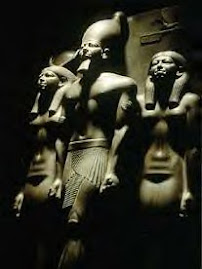









No comments:
Post a Comment